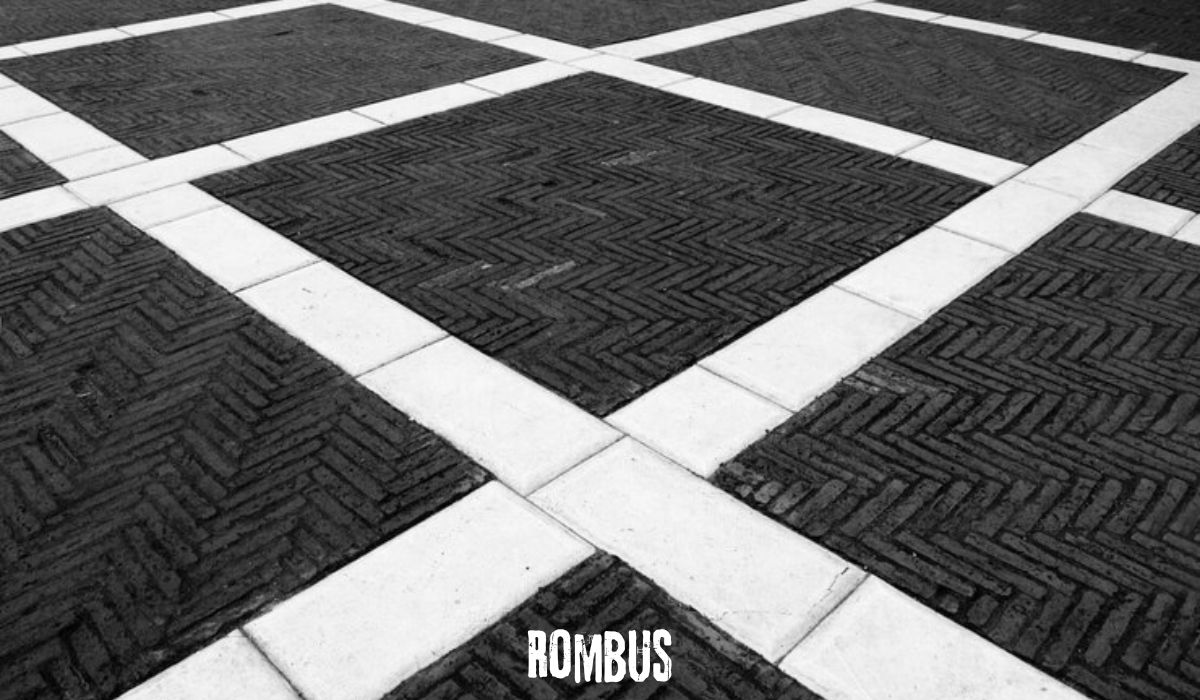In the realm of concrete construction, efficiency and cost-effectiveness are paramount. The Rombus grid system has emerged as a groundbreaking solution that addresses these needs, transforming how concrete slabs, pavements, sidewalks, and car parks are constructed. By reducing formwork and minimizing concrete usage while maintaining structural integrity, the Rombus grid represents a significant advancement in construction technology. This article explores the Rombus grid in detail, highlighting its benefits, applications, and impact on the construction industry.
What is the Rombus Grid?
Definition and Concept
The Rombus grid is an innovative construction system designed to optimize the use of concrete and reduce overall project costs. It employs a geometric grid pattern that supports concrete slabs, pavements, sidewalks, and car parks with enhanced efficiency. The grid’s design minimizes the need for extensive formwork and reduces the amount of concrete required, making it a cost-effective solution for various construction projects.
You Might Also Like: Geöe Pioneering the Future of Sustainable Energy Innovation
How It Works
The Rombus grid system consists of interlocking grid elements arranged in a rhombus pattern. These elements serve as a framework that supports the concrete during curing and provides structural stability once the concrete has set. The grid’s geometry allows for the even distribution of load and reduces the overall weight of the concrete slab or pavement, leading to cost savings and improved performance.
Advantages of the Rombus Grid
Cost Savings
One of the primary benefits of the Rombus grid is its cost-effectiveness. By reducing the amount of concrete needed and minimizing formwork requirements, the system lowers material and labor costs. The efficient use of resources also reduces the overall environmental impact of construction projects.
Reduced Formwork
Traditional concrete construction often requires extensive formwork to shape and support the concrete until it sets. The Rombus grid reduces the need for formwork, simplifying the construction process and speeding up project completion. This reduction in formwork not only saves on costs but also decreases the amount of waste generated during construction.
Improved Structural Efficiency
The geometric design of the Rombus grid enhances the structural efficiency of concrete slabs and pavements. The grid’s pattern helps distribute loads evenly, reducing stress on individual components and increasing the overall durability of the structure. This improved structural performance contributes to longer-lasting and more reliable construction outcomes.
Environmental Benefits
The Rombus grid contributes to environmental sustainability by reducing the amount of concrete required for construction. Less concrete usage translates to a lower carbon footprint and decreased demand for raw materials. Additionally, the reduced formwork and waste production further support eco-friendly construction practices.
Applications of the Rombus Grid
Concrete Slabs
In the construction of concrete slabs, the Rombus grid provides a cost-effective alternative to traditional methods. By using the grid system, contractors can achieve the same structural strength with less concrete, leading to significant cost savings and reduced material usage. The grid’s design also simplifies the placement and leveling of the concrete, ensuring a smooth and even finish.
Pavements
The Rombus grid is particularly useful for pavement construction. Its efficient use of concrete and reduced formwork requirements make it an ideal choice for high-traffic areas and public spaces. The grid’s ability to evenly distribute loads enhances the durability of pavements, reducing maintenance needs and extending the lifespan of the surface.
Sidewalks
Sidewalk construction benefits from the Rombus grid’s efficiency and cost-effectiveness. The grid system simplifies the construction process, allowing for quicker installation and reduced labor costs. Its structural efficiency ensures that sidewalks are both durable and aesthetically pleasing, meeting the needs of pedestrians and urban planners.
Car Parks
For car parks, the Rombus grid offers a robust and economical solution. The grid’s design supports the weight of vehicles while minimizing the amount of concrete used. This makes it an ideal choice for both residential and commercial car parks, providing a durable surface that can withstand heavy loads and frequent use.
Implementing the Rombus Grid
Design Considerations
When implementing the Rombus grid system, several design considerations must be taken into account. These include the load-bearing requirements, the type of concrete mix, and the spacing of grid elements. Proper planning and design ensure that the grid system performs optimally and meets the specific needs of the project.
Must Visit: mizpedia
Installation Process
The installation process for the Rombus grid involves several key steps:
- Preparation: Site preparation includes clearing the area and ensuring a stable foundation for the grid system.
- Grid Placement: The grid elements are laid out according to the design specifications, ensuring proper alignment and spacing.
- Concrete Pouring: Concrete is poured over the grid and spread evenly to fill the gaps and create a solid surface.
- Curing: The concrete is allowed to cure and set, during which the grid supports the concrete and maintains its shape.
Maintenance and Longevity
Maintaining a structure built with the Rombus grid involves regular inspections to ensure that the concrete remains in good condition. Proper maintenance includes addressing any cracks or damage promptly and ensuring that the surface remains clean and free of debris. With proper care, structures built using the Rombus grid can offer long-lasting performance and durability.
Case Studies and Examples
Residential Projects
The Rombus grid has been utilized for the construction of residential driveways and sidewalks, resulting in efficient and cost-effective solutions. Homeowners benefit from reduced construction costs and a durable, low-maintenance surface that enhances the aesthetic appeal of their property.
Commercial Developments
Commercial projects, such as shopping centers and office complexes, have utilized the Rombus grid for pavements and car parks. The system’s ability to support heavy loads and reduce costs has made it a popular choice for large-scale developments, providing both functional and financial benefits.
Public Infrastructure
Public infrastructure projects, including park pathways and municipal parking lots, have also adopted the Rombus grid system. Its efficiency and environmental benefits align with sustainable construction practices, making it a valuable option for urban development.
Future Trends and Innovations
Advancements in Grid Design
Ongoing research and development in grid design are likely to lead to further innovations in the Rombus grid system. Advances may include improvements in grid materials, enhanced load-bearing capacities, and more efficient construction techniques.
Integration with Smart Technologies
The integration of smart technologies into construction systems, including the Rombus grid, could lead to more advanced solutions. Smart sensors and monitoring systems may provide real-time data on the performance of concrete structures, allowing for proactive maintenance and optimization.
Sustainability and Eco-Friendly Practices
The focus on sustainability and eco-friendly construction practices will continue to drive innovations in the Rombus grid system. Future developments may include the use of recycled materials, energy-efficient production processes, and further reductions in environmental impact.
Conclusion
The Rombus grid represents a significant advancement in concrete construction, offering a cost-effective and efficient solution for slabs, pavements, sidewalks, and car parks. By reducing formwork, minimizing concrete usage, and enhancing structural efficiency, the Rombus grid system provides numerous benefits to both contractors and project owners. The Rombus grid is expected to significantly influence the future of building practices in the evolving construction industry. Embracing this innovative system can lead to more sustainable, economical, and high-performance construction projects, benefiting a wide range of applications and contributing to the overall advancement of the industry.
FAQs
1. What is the Rombus grid?
The Rombus grid is a revolutionary construction method utilized for the construction of concrete slabs, pavements, sidewalks, and car parks. It features a geometric grid pattern that reduces the amount of concrete and formwork required, leading to cost savings and increased efficiency.
2. How does the Rombus grid work?
The Rombus grid consists of interlocking grid elements arranged in a rhombus pattern. These elements support the concrete during curing and distribute loads evenly, enhancing structural stability and reducing the overall amount of concrete needed.
3. What are the main benefits of using the Rombus grid?
The Rombus grid offers several benefits, including cost savings, reduced formwork requirements, improved structural efficiency, and environmental sustainability. It minimizes concrete usage and waste, leading to lower project costs and a smaller environmental footprint.
4. In which construction projects is the Rombus grid commonly used?
Concrete slabs, pavements, walkways, and parking lots are just a few examples of the many building projects that make use of the Rombus grid. It is suitable for residential, commercial, and public infrastructure projects where cost-effectiveness and durability are important.
5. How does the Rombus grid contribute to environmental sustainability?
By reducing the amount of concrete needed and minimizing formwork, the Rombus grid lowers the carbon footprint of construction projects. It decreases the demand for raw materials and reduces waste, supporting eco-friendly construction practices.




